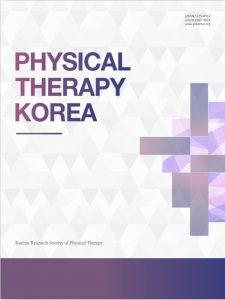Publications

Relationship Between Craniovertebral Angle and Upper Trapezius Muscle Stiffness and Tone in Office Workers
Authors: Yoon-ji Lee 1, Sung-hoon Jung 2, Jun-hee Kim 3, Oh-yun Kwon 3, 4
Affiliations:
- Department of Physical Therapy, The Graduate School, Yonsei University, Wonju,
- Department of Physical Therapy, Division of Health Science, Baekseok University, Cheonan
- Department of Physical Therapy, College of Software and Digital Healthcare Convergence, Laboratory of Kinetic Ergocise Based on Movement Analysis, Yonsei University
- Department of Physical Therapy, College of Software and Digital Healthcare Convergence, Yonsei University, Wonju, Korea
Journal: Journal of Physical Therapy Korea - April 2025, Volume 32, Issue 1, Pages 76-82 (DOI: 10.12674/ptk.2025.32.1.76)
-
Field & Applications:
- Medical
- Occupational Healthcare
- Balance / Postural control
- Musculoskeletal health
Background: With the increase of seated work, interest in forward head posture (FHP) has grown. Prolonged computer tasks with FHP have been considered a factor that increases the stiffness and tone of the upper trapezius (UT) muscle. Traditionally, many studies have measured the craniovertebral angle (CVA) in standing positions to assess FHP, making it difficult to determine whether the CVA measured in a habitual working posture correlates with the stiffness and tone of the UT muscle in office workers.
Objects: This study aimed to investigate the relationship among CVA, UT muscle stiffness, and tone in both habitual working and standing postures among asymptomatic office workers.
Methods: Forty asymptomatic office workers participated in the study. CVA was measured in both habitual working and standing postures. Stiffness and tone of the UT muscle were assessed after a 10-minute computer task. Pearson’s correlation coefficient was used to investigate the relationship between CVA and stiffness and tone of the UT muscle.
Results: No significant correlations were found between CVA in standing posture and the stiffness and tone of the UT muscle. However, moderate negative correlations were observed between CVA measured in the habitual working posture and both the stiffness (dominant: r = -0.490, non-dominant r = -0.465) and tone (dominant: r = -0.501, non-dominant r = -0.446) of the UT muscle.
Conclusion: This study highlights that decreased CVA in habitual working posture is associated with increased stiffness and tone of the UT muscle in asymptomatic office workers. Therefore, measuring CVA in the habitual working posture should be considered when evaluating stiffness and tone of the UT muscle.
Keywords: craniovertebral angle, muscle stiffness, muscle tone, office workers
The present study revealed that CVA in the standing posture was not associated with UT muscle stiffness or tone in asymptomatic office workers. However, a moderately negative correlation was observed between the CVA in the habitual working posture and both stiffness and tone of the UT muscle. These findings suggest that maintaining a relatively good posture is associated with reduced UT muscle stiffness and tone.


